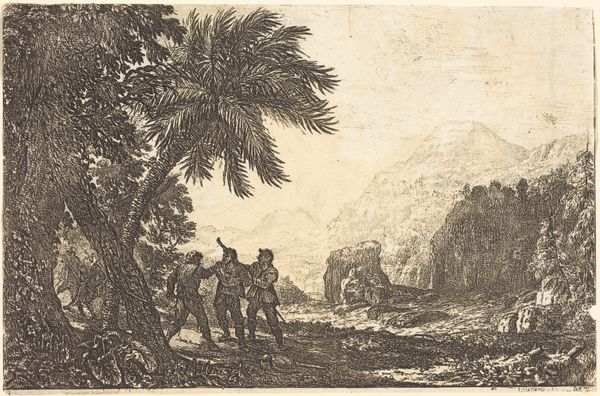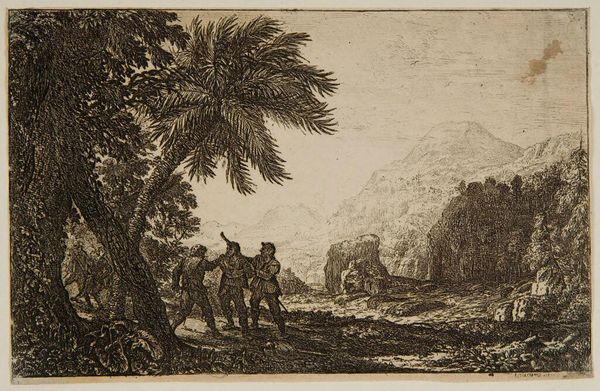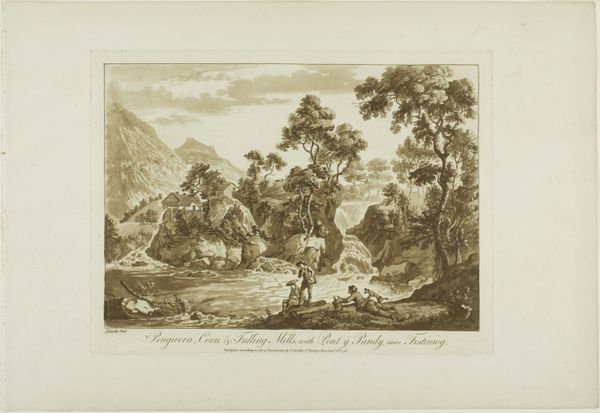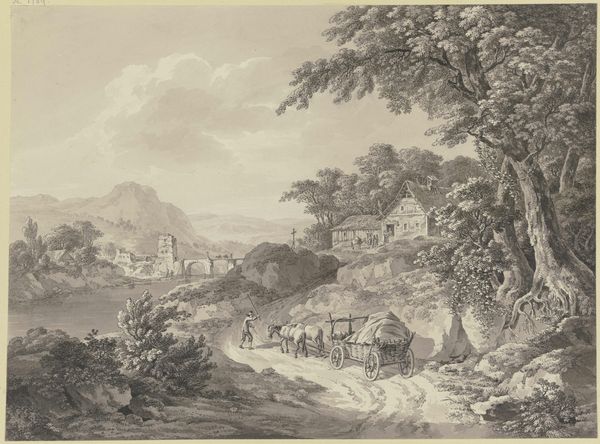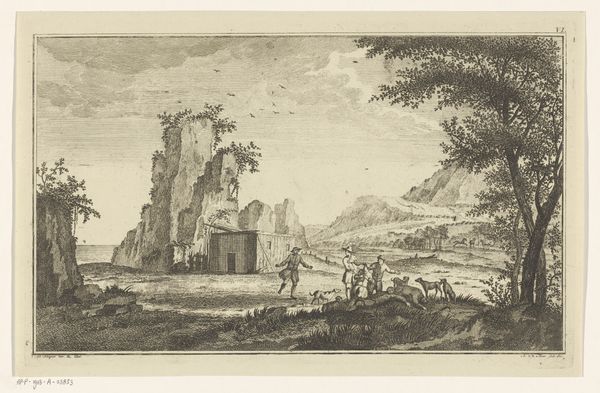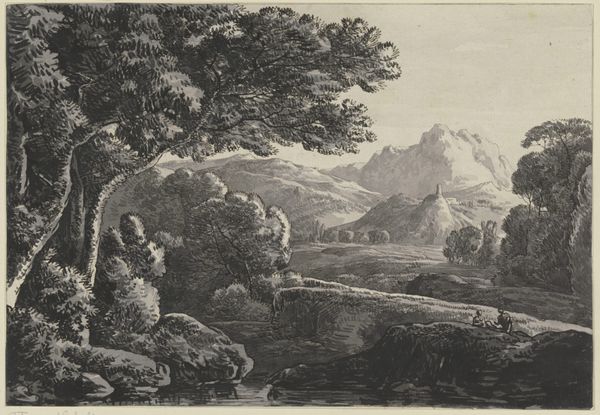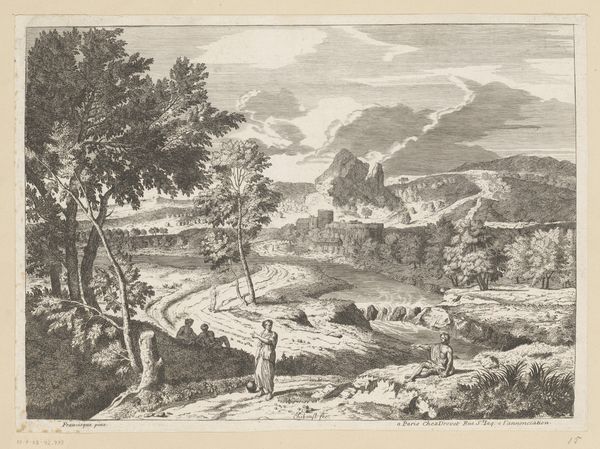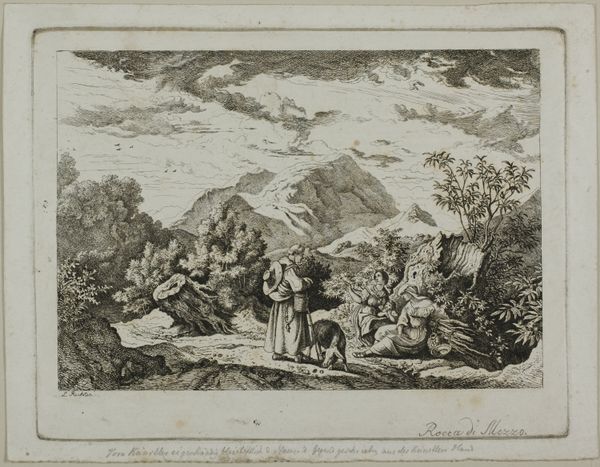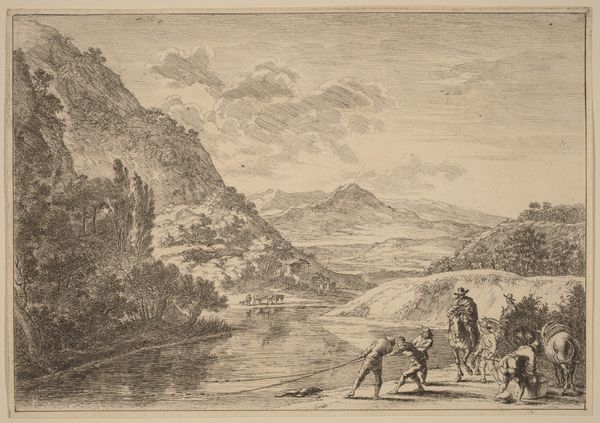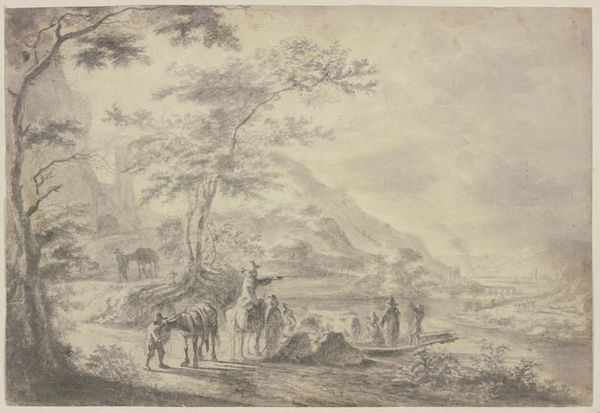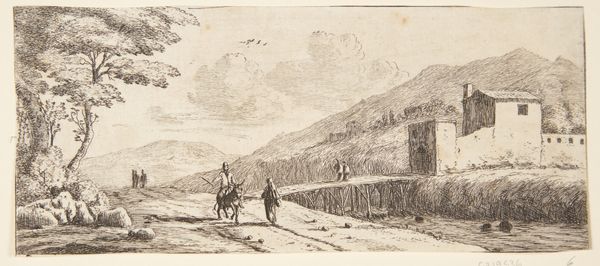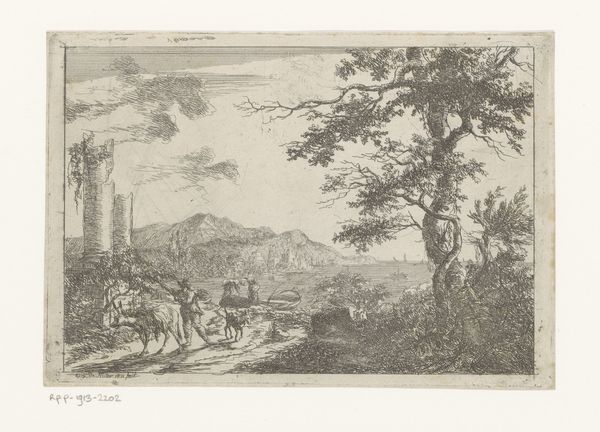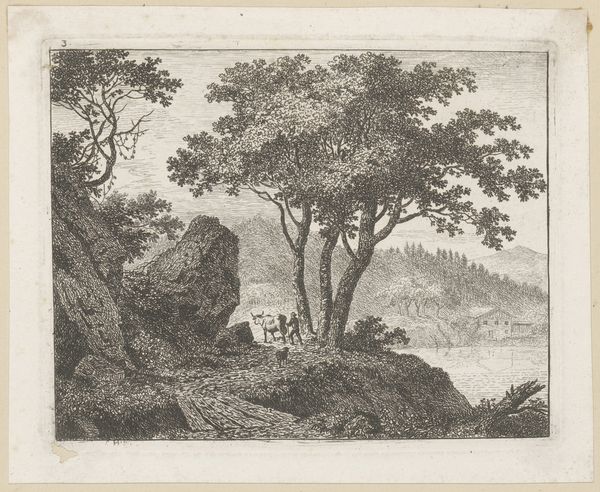
drawing, etching
#
drawing
#
baroque
#
etching
#
landscape
#
etching
#
figuration
#
history-painting
Dimensions: sheet: 5 9/16 x 8 3/8 in. (14.1 x 21.2 cm) plate: 5 1/16 x 7 7/8 in. (12.8 x 20 cm)
Copyright: Public Domain
Editor: This etching, "Landscape with Brigands" by Claude Lorrain, dated 1633, strikes me as quite theatrical. It's almost like a stage set with these figures positioned against this grand, sweeping landscape. How do you interpret this work in light of its historical context? Curator: It's interesting you see the theatricality. I agree. Consider that 17th-century art, especially landscape, was heavily influenced by idealization. This wasn’t simply about representing nature. Lorrain, like many artists of his time, was shaping a *vision* of nature, tinged with social and political undertones. It's not a straightforward record of the Roman countryside; rather, a carefully constructed image that promotes particular ideas, perhaps of the Italian landscape and the events happening within it. Editor: So the 'brigands' aren't just incidental; they’re part of the statement? Were depictions of brigands a common motif then? Curator: Exactly! The inclusion of brigands introduces narrative and also complicates the idyll. Crime and banditry were serious problems at the time, yet here they are, picturesque elements integrated into the composition. It makes you question the power dynamics present, doesn't it? We often don’t realize just how complicit art could be in these situations. Consider how the patronage of this piece likely sat above this class, possibly viewing them with romantic ideals, rather than a sense of grounded truth. What did this composition do for them? Editor: It makes you wonder who the intended audience was and how their social position shaped their viewing experience. I hadn't considered that so explicitly before. Thanks for shedding light on the public and societal functions of works like this. Curator: Absolutely. It's vital to look beyond the aesthetic to understand how art operated within its time. Art always reflects both cultural ideals *and* the often-messy realities. Considering Claude Lorrain also came from very humble beginnings, he quickly worked his way up in society, eventually serving important people with powerful standing and reach. Looking at his artwork from this new perspective definitely gives food for thought.
Comments
No comments
Be the first to comment and join the conversation on the ultimate creative platform.
